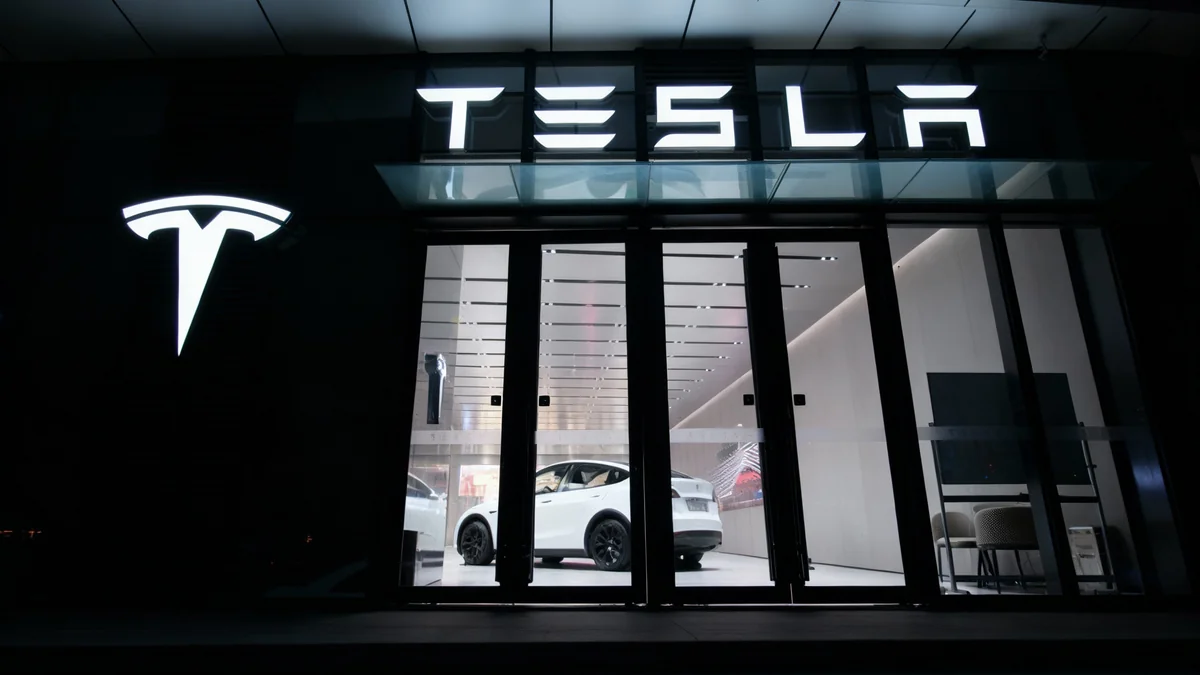Tesla reported an 11.6% year-over-year increase in revenue for the third quarter of 2025, reaching $28.1 billion. However, the electric vehicle manufacturer faced challenges with profitability, as earnings per share and operating margins fell short of market expectations and prior-year levels.
The company's latest financial disclosure, released Wednesday, points to a period of transition. While vehicle deliveries surged, Tesla's management acknowledged near-term economic uncertainties and signaled a strategic pivot towards long-term growth in artificial intelligence, software, and fleet-based services.
Key Takeaways
- Revenue Growth: Q3 revenue rose to $28.1 billion, an 11.6% increase from the same period last year.
- Profit Miss: Earnings per share came in at $0.50, below the consensus estimate of $0.56.
- Margin Pressure: Operating margin was 5.8%, a significant drop from 10.8% in Q3 2024, though a slight improvement from the previous quarter.
- Delivery Record: The company delivered 497,099 vehicles, driven by customers taking advantage of an expiring government tax credit.
- Future Focus: Tesla's outlook emphasizes future profits from AI, software, and fleet services to complement hardware sales.
A Detailed Look at the Financials
Tesla's third-quarter financial results present a complex picture for the automotive giant. While the top-line revenue figure showed healthy growth, other key metrics indicated increasing pressure on the company's bottom line. GAAP net income for the quarter stood at $1.4 billion, with non-GAAP net income reported at $1.8 billion.
One of the most closely watched figures, operating margin, landed at 5.8%. This represents a sharp decline from the 10.8% margin reported in the third quarter of the previous year. Despite the year-over-year drop, the figure shows a marginal sequential improvement from the second quarter of 2025, suggesting some stabilization.
Q3 Financial Snapshot
- Operating Income: $1.62 billion (down 40% year-over-year)
- Adjusted EBITDA: $4.23 billion (down from $4.67 billion)
- Total GAAP Gross Margin: 18.0% (down from 19.8% year-over-year)
Despite the challenges in profitability, the company demonstrated strong cash management. Free cash flow was a standout success, reaching $3.99 billion for the quarter. This figure significantly surpassed the consensus estimate of $1.25 billion. Tesla concluded the quarter with a robust cash position of $41.6 billion on its balance sheet.
Record Deliveries Amid Shifting Incentives
On the production and delivery front, Tesla posted strong numbers. The company delivered a total of 497,099 vehicles in the third quarter, a new high. This surge was largely attributed to buyers rushing to finalize purchases before the expiration of a $7,500 government tax credit.
During the same period, Tesla produced 447,450 vehicles. The vast majority of these were the popular Model Y and Model 3 vehicles, which accounted for 435,826 of the units produced and 481,166 of the units delivered.
A Trend of Growth
The Q3 delivery numbers continue an upward trend for Tesla throughout 2025. The company reported 336,681 vehicle deliveries in the first quarter and 384,122 in the second quarter. The latest figures also surpass the 462,890 deliveries from the same quarter in 2024.
Beyond its core automotive business, Tesla noted that its energy storage division also achieved a record level of deployments, signaling growth in other key segments of its operations.
Navigating Uncertainty with a Focus on the Future
In its outlook, Tesla's management directly addressed the challenges ahead while reaffirming its long-term strategy. The company is preparing for a period of potential volatility driven by external economic factors.
"While we face near-term uncertainty from shifting trade, tariff, and fiscal policy, we are focused on long-term growth and value creation," the company stated in its report.
Tesla is making what it calls "prudent" investments in future business lines, including transport, energy, and robotics. The company's vision extends beyond simply selling cars. The statement highlighted a strategic shift, where profits from hardware are expected to be increasingly supported by new revenue streams.
"Over time, we expect our hardware-related profits to be accompanied by an acceleration of AI, software, and fleet-based profits," the company explained. This indicates a clear intention to monetize its technological advancements in areas beyond the initial vehicle sale, creating recurring revenue opportunities.
Following the release of the report, Tesla's stock saw a modest decline of 0.8% in after-hours trading, reflecting a mixed reaction from investors who are weighing the company's current margin pressures against its ambitious long-term vision.





